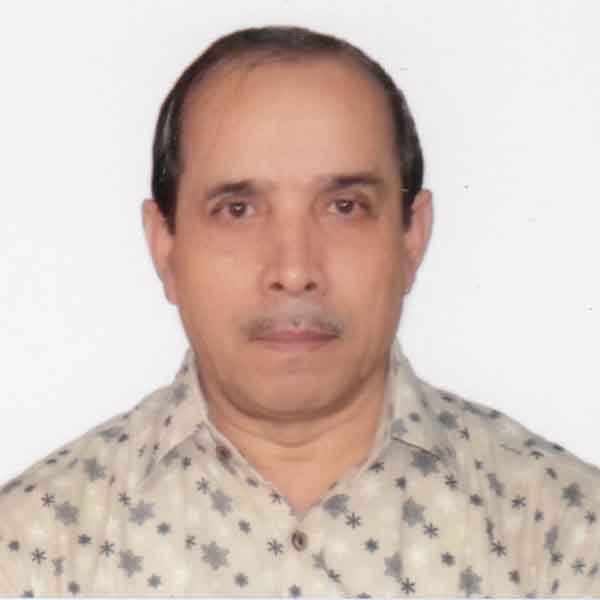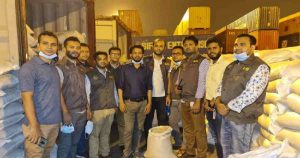Mostafa Kamal Majumder
Despite the official announcement from the highest level of the government of rejection of their proposal for the import of toxic industrial wastes in the guise of generating cheap electricity for a caustic chlorine plant, the waste import racket refused to give up. There was money to be made and they had the ability of manipulate people close to the corridors of power. They lobbied at different levels and managed to get two promotional articles in a leading English weekly and a leading English daily of Dhaka City published on December 30, 1988 and January 02, 1989 respectively.
In those articles they made a strong case for the generation of cheap electricity by ‘burning’ industrial wastes. They showed the cost of electricity generated in the process to be as low as Taka 0.30 a unit as against Taka 2.30 required per unit under the prevailing processes using natural gas and coal. In the second article an open advocacy was made for the import of industrial wastes disregarding the social movement that the media campaign generated plus the official rejection of the proposal. Similar articles were published in another couple of newspapers.
The lobbying paid off and the Ministry of Industries in January 16 1989 appointed a 4-member committee of experts to examine the proposal for the import of industrial wastes by determining if such wastes were excessively toxic or radioactive and were threats to the environment. Dr. K Ikhtyar Omar, Professor of chemical engineering, Bangladesh University of Engineering and Technology (BUET) was made the convener of the committee. Its other members were – Dr. MA Mannan, Chairman, Bangladesh, Atomic Energy Commission, Ms SHM Abul Bashar, Director of Environmental Pollution Control, and Dr. Khurshidul Islam who represented the import lobby. Dr. Md. Nurul Islam, Director, Institute of Appropriate Technology BUET, was made a member upon special invitation.
In the actual working of the committee the Atomic Energy Commission was represented by Dr. Amir Hossain Khan, pioneer of nuclear chemistry in Bangladesh who was also a student of legendary Professor SZ Haider of the department of chemistry, Dhaka University. Prof SZ Haider as an expert interpreted the technical details of the proposed import of industrial wastes and the chemicals that were to be with the actual wastes as specified by foreign exporters. He was also the prime mover of a resolution adopted by the Bangladesh Association for the Advancement of Sciences against the proposed import of wastes. The resolution was printed in all important newspapers and gave the media campaign against the import of industrial waste a momentum. The Department of Environmental Pollution Control was represented by Khandakar Abu Taleb, seniormost director of the DEPC.
After a couple of meetings of the committee, the import lobby got the understanding that it was impossible to influence its members. It transpired that representatives of the import lobby moved to offices and homes of some members with briefcase-full of money to purchase them individually. Alongside this lure there were threats to safety of their movement from office to residence. The committee was under constant surveillance of the news media. For reasons not made clear the Ministry of Industries which appointed the committee refrained from meeting its recurring expenses. The members of the committee however took the work as their patriotic duty to the nation. They worked for three months and came up with their report on April 16. The expenses of the committee meetings and cost of preparing the report with cyclostyled copies of papers were borne by the members of the committee. The committee not only negated the technical viability of the proposed import and incineration of industrial wastes but also strongly opined that such import would pose a serious threat to the environment.
The committee of experts after analysing all technical facts and data argued that the generation of electricity by incinerating industrial wastes may not necessarily be cheaper than power produced by using natural gas which was readily available. On an inquiry the committee also found that the setting up of an industrial waste-based plant would not be necessary if a plan of the Bangladesh Chemical Industries Corporation to set up a PVC plant was implemented. Caustic Chlorine would be available from that plant as an offshoot without involving many risks.
Alongside the media campaign there was a strong social movement against the move to import toxic industrial wastes into Bangladesh, ‘Naripokkho’, a women’s activist group took up a movement plan to resist the import of industrial wastes. The women’s activist group organised seminars, rallies, processions and demonstrations against the move. Its activities were covered by different newspapers. This writer wrote for a number of weeklies apart from writing for The Bangladesh Times on updates on the move at government offices. This writer also spoke at several seminars and discussion meetings organised by Naripokkho. The campaign and the movement received sympathetic ears in political circles from where occasional statements were issued. The Ministry of Industries ultimately had no option but to drop the proposal.
Meanwhile, international waste dumping rackets started sending shiploads of hazardous wastes for dumping on Third World countries and South Asian countries were among their targets. GREENPEACE alerted Bangladesh in late 1988 through its Washington Embassy about possible dumping of toxic wastes on Bangladesh’s territorial waters. In late October the same year the environmental group alerted about the entrance of a waste laden ship into the Indian Ocean and the possibility of dumping the cargo secretly.
It was gathered that the ghost ship originally named ‘Khian Sea’ had set out from Philadelphia, the US in August 1986 with 15 thousand tons of toxic incinerator ash. In following January the vessel had started unloading the toxic ash by lebelling it as fertilizer on a beach in Haiti. However when the Haitian government discovered the trick, it ordered the ship to reload the cargo. The ship secretly left the Haitian beach on the night of February 24 leaving an estimated 4000 of toxic wastes.
In late May the ship cruised across the Atlantic and unsuccessfully tried to unload the cargo. It made another unsuccessful attempt in Yugoslavia. But while undergoing repair at a shipyard in Yugoslavia the name of the ship was changed from ‘Khian Sea’ to ‘Falicia’. After operating without registration for two months, a Honduran registration was ultimately obtained for the ship. Then the ship began its cruise towards the Indian Sea. The ship was refused permission to enter the harbour in Sri Lanka. But cruising through the Indian Ocean the ship reached Singapore after emptying its cargo. According to US newspapers the crew of the ship had admitted the dumping of the toxic waste on the territories of a certain country they refused to name.
Another disturbing piece of information flowed to Bangladesh when a Californian newsweekly ‘India West’ wrote to the Bangladesh Embassy in Washington on January 30 1989 seeking the verification of an information as to whether ten thousand tons of hazardous incinerator ash has been dumped on a landfill in Bangladesh. It took about a month for the message to travel to the Bangladesh Department of Environmental Pollution Control through the Foreign Office and the Local Government Ministry.
The international toxic waste dumping lobbies however continued to target Bangladesh to offload their wastes on its territories. In 1991 as large quantity (about 10,000 metric tons) of zinc oxy sulphate fertilizer mixed with powdered toxic wastes was imported for distribution among farmers. The toxic contents included cadmium, chromium, marcaptan and other substances. Distribution of the said fertilizer was halted when the news media reported the dangerous waste dumping story. The news media campaign that followed made the importers of the cargo to compel the exporters take part of the toxic fertilizer back.
Waste dumping remained a never-ending story then and it continues to be so now. In 1993 workers of a paper mill near Dhaka screamed and fainted as they could not stand the foul ordour of imported waste paper which was being recycled to make paper. The waste paper was mixed with liquid toxic waste, Environmental Pollution Control Board inspectors said. An inquiry revealed that the owners of the paper mill managed to amend the import licencing policy by delisting wastes from commodities under import ban list.
(The writer is the editor of GreenWatch Dhaka.)




